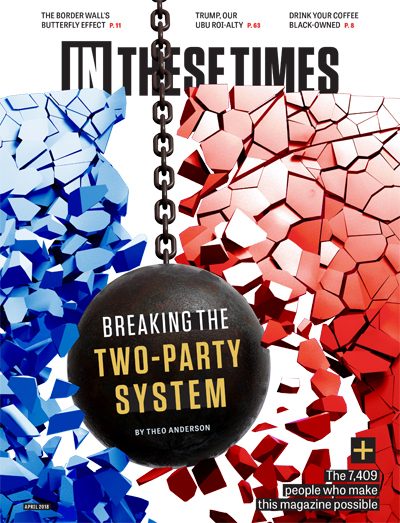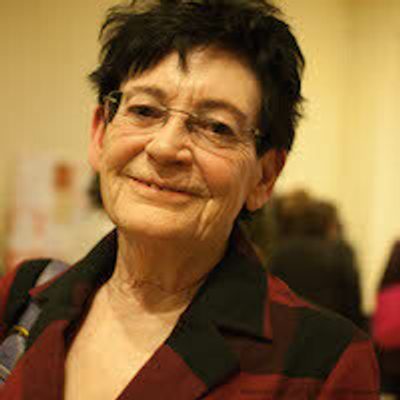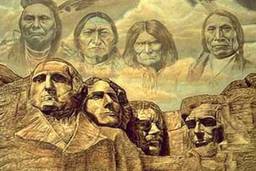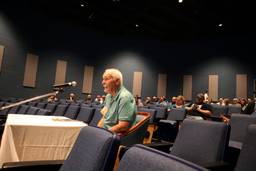The Colonial Roots of Gun Culture
The origins of the U.S. gun obsession lie in the violent dispossession of Native Americans.
Roxanne Dunbar-Ortiz
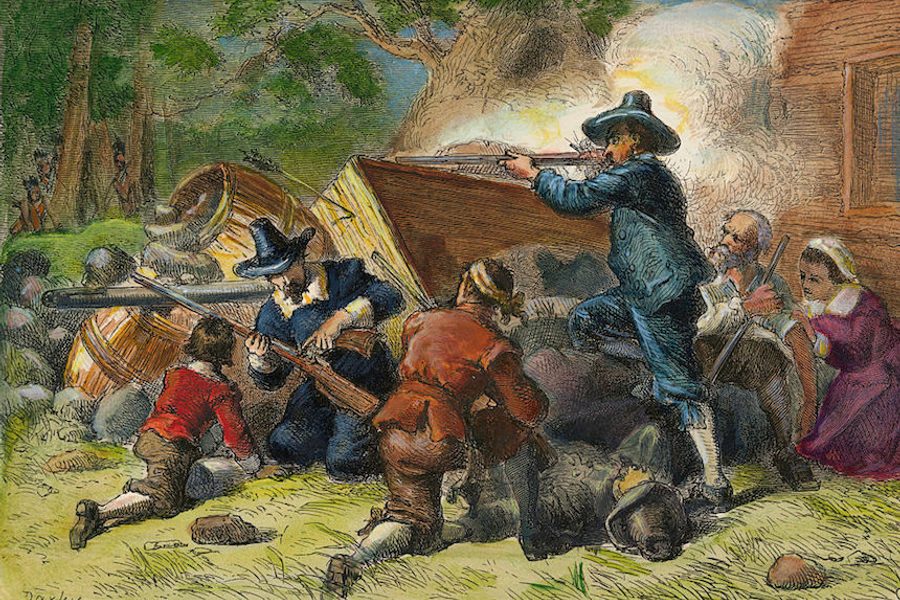
This text is adapted from Loaded: A Disarming History of the Second Amendment.
In the summer of 1970, while I was living and organizing in New Orleans with a women’s study-action group, we became caught up in a current of repression and paranoia. After a week of heavy police surveillance, we began receiving telephone calls from a man claiming to be a member of the Ku Klux Klan. The man threatened to burn down our building, and, of course, we didn’t trust the police, so we did not report it. Instead, we decided to arm ourselves. We saw it as a practical step, not a political act, something we needed for self-defense in order to continue working, not at all embracing armed struggle. In reality, once armed, our mindsets changed to match the new reality.
Gun-love can be akin to non-chemical addictions like gambling or hoarding, either of which can have devastating effects, but murder, suicide, accidental death and mass shootings result only from guns. While nearly anything may be used to kill, only the gun is created for the specific purpose of killing a living creature. The sheer numbers of guns in circulation, and the loosening of regulations on handguns especially, facilitate deadly spur-of-the-moment reflex acts.
Seventy-four percent of gun owners in the United States are male, and 82 percent of gun owners are white. The top reason U.S. Americans give for owning a gun is for protection. What are the majority of white men so afraid of?
Instead of dismissing the Second Amendment as antiquated and irrelevant, or as not actually meaning what it says, understanding the original purpose of the Second Amendment is key to understanding gun culture, and possibly the key to a new consciousness about the continuing effects of settler-colonialism and white nationalism.
One argument that runs through historical accounts of the thinking behind the Second Amendment is idealizing Anglo settler-farmers as fiercely independent and rightly fearing Big Brother government, insisting on settlers’ right to overthrow oppressive regimes. But, what colonists considered oppressive was any restriction put on them in regard to obtaining land. In the instances of Bacon’s Rebellion in 1676, the War of Independence itself, and many cases in between, the settlers’ complaint was the refusal of the British colonial authorities to allow them to seize Native land peripheral to the colonies.
Taking land by force was not an accidental or spontaneous project or the work of a few rogue characters. Male colonial settlers had long formed militias for the purpose of raiding and razing Indigenous communities and seizing their lands and resources, and the Native communities fought back. Virginia, the first colony, forbade any man to travel unless he was “well armed.” In 1658, the colony ordered every settler home to have a functioning firearm, and later even provided government loans for those who could not afford to buy a weapon.
These types of laws stayed on the books of the earliest colonies and were created in new colonies as they were founded. The Second Amendment, ratified in 1791, enshrined these rights and obligations as constitutional law: “A well regulated Militia, being necessary to the security of a free State, the right of the people to keep and bear Arms, shall not be infringed.” The Second Amendment thus reflects this dependence on individual armed men to take and retain land.
The continuing significance of that “freedom” specified in the Bill of Rights reveals the settler-colonialist cultural roots of the United States that appear even in the present as a sacred right. Settler-militias and armed households were institutionalized for the destruction and control of Native peoples, communities and nations. With the expansion of plantation agriculture, by the late 1600s they were also used as “slave patrols,” forming the basis of the U.S. police culture after emancipation.
That is the way of settler-colonialism, and that is the way of the gun — to kill off and control enemies. Violence perpetrated by armed settlers, even genocide, were not absent in the other British settler-colonies — Australia, Canada and New Zealand — but the people of those polities never declared the gun a God-given right. And the people of the other Anglo settler-colonies did not have economies, governments and social orders based on the enslavement of other human beings. The United States is indeed “exceptional.”

I hope you found this article important. Before you leave, I want to ask you to consider supporting our work with a donation. In These Times needs readers like you to help sustain our mission. We don’t depend on—or want—corporate advertising or deep-pocketed billionaires to fund our journalism. We’re supported by you, the reader, so we can focus on covering the issues that matter most to the progressive movement without fear or compromise.
Our work isn’t hidden behind a paywall because of people like you who support our journalism. We want to keep it that way. If you value the work we do and the movements we cover, please consider donating to In These Times.
